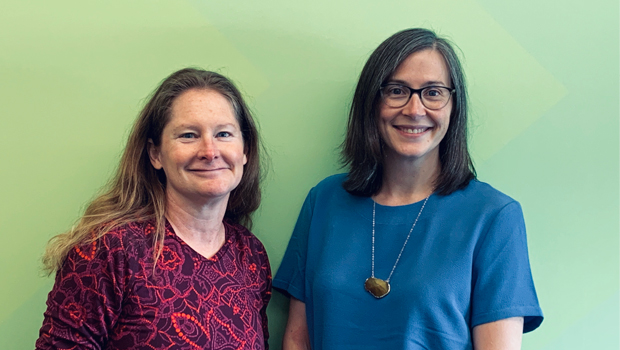How to prevent suicide by firearms

Julie Richards, MPH, and Rebecca Parrish, LICSW
Julie Richards’ study is one of the first three funded by Kaiser Permanente’s Firearm Injury Prevention Task Force
We talked with Julie Richards, MPH, a research associate at Kaiser Permanente Washington Health Research Institute (KPWHRI). She is the principal investigator of “Integration of Firearm Suicide Prevention Tools in Health Care Settings: Patient-Reported Access to Firearms & Decision Aid for Securing Firearms,” a new two-year, $400,000 study that Kaiser Permanente’s Firearm Injury Prevention Task Force recently funded.
Why does this kind of research matter?
Firearm-related research has been underfunded for the past couple decades, so this is a big opportunity for us to build a new line of research that has potential to save lives. Those opportunities don’t come along every day, so we are very grateful.
What are you expecting to find—and how will this help prevent death by suicide using firearms?
I’m expecting we’ll learn about pragmatic patient-centered approaches to addressing firearm-related suicide risk. Specifically, we’ll be studying whether the Kaiser Permanente Washington approach of asking patients about firearm access routinely in the context of mental health-related care is potentially useful for suicide prevention. We’ll use existing data to explore the relationship between responses to the screening questions and subsequent firearm injury events. We’ll complement these data with interviews to assess the acceptability of these questions for patients. In parallel, we’ll also learn whether and how the “Lock to Live” decision aid is helpful to clinicians and patients.
What is Lock to Live?
Lock to Live is an anonymous, web-based decision aid that was created by Marian Betz, MD, MPH, and a team of researchers, clinicians, and patients to help people at risk of suicide make decisions about how to securely store firearms and other lethal means. The decision aid is being tested in a clinical trial at the University of Colorado, Denver. Our study will evaluate a real-world implementation of Lock to Live in our health system. We’ll integrate access to it into the screening workflow for clinicians who are seeing patients at risk for suicide. We’ll examine how many patients use this new decision aid and how much they use it—and whether and how clinicians find it useful.
What excites you most about this project?
There’s a ton of reasons I’m excited about this project, but one of the biggest is that I get to partner with some amazing people at Kaiser Permanente Washington on a research project close to my heart. They include the clinical champion for this project—Rebecca Parrish, LICSW, who co-leads the efforts to integrate clinical care for mental health and wellness in our primary care system—as well as Elena Kuo, PhD, a mixed-method researcher at KPWHRI’s Center for Community Health and Evaluation.